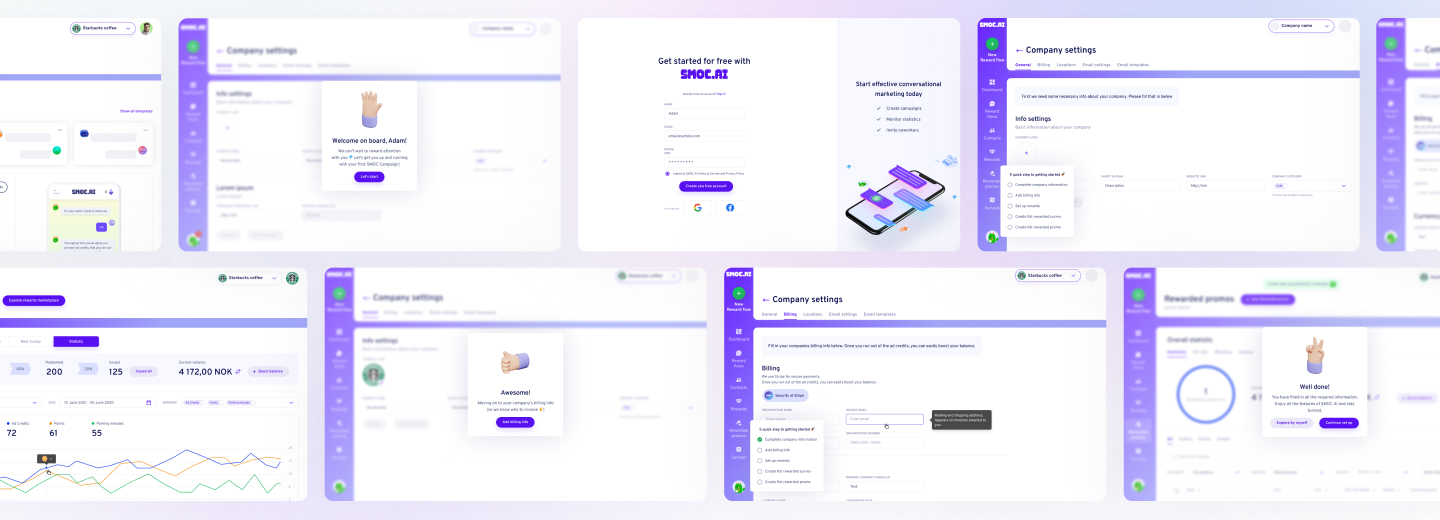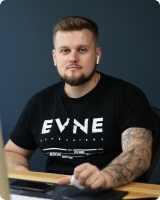Trying to identify the next business breakthrough rarely feels straightforward. There’s plenty of creativity at the start, excitement tinged with the ambition to shift an industry, but not every idea makes it far beyond the whiteboard. The challenge, then, is to turn raw inspiration into products that matter. In my work leading a consulting company over the past decade, I’ve encountered too many great ideas that missed their true potential because they never underwent rigorous screening. Some made it to market only to fall flat, while others failed quietly in pilot phases, costing more than just money, they drained motivation and trust.
Reducing waste and maximizing the odds of success in new product initiatives depends on one critical phase: idea screening. This process does not mean it greatly reduces creativity added to the business idea or prohibits any experimentation. Instead, it helps to move from chaos to clarity, define what makes the greatest value for your potential customers and differentiate you from competitors in the market.
Let’s look at why screening is so vital for CEOs, founders, and product leaders alike and how a disciplined approach to this early stage can transform not just your launch pipeline, but the culture of your entire organization.
TLDR
Idea screening ensures you invest only in product ideas that genuinely deserve attention. It can serve as an essential filter between a brainstorm and a boardroom pitch. Skipping this step risks wasting resources, missing market timing, and products that fail to find the recognition of your audience in the target market. You need structured criteria and a blend of qualitative and quantitative assessment to achieve good experience in this approach; but as a result, you drive better decisions, move faster, and build confidence at every level of your team and stakeholder group.
what’s in the article
- What is idea screening?
- Key Advantages of Screening Ideas Before Launching a New Product
- Step-by-step process for effective idea screening
- Conclusion
What is idea screening?
To put it simply, idea screening is the structured evaluation of potential new product ideas or a product roadmap. Its primary goal is to identify which steps should find their implementation in development and which should be discarded. It ensures the early elimination of concepts that lack promise, feasibility, or alignment with business goals, well before any real investments are made.
Formalizing a definition: idea screening refers to a systematic review process where ideas are measured against a set of predetermined criteria. These typically include market need, technical feasibility, fit with strategic objectives, and estimated ROI. The goal is to move only the most promising concepts forward for deeper development.
Many organizations confuse idea screening with idea generation, but they are fundamentally distinct. While idea generation is about opening the floodgates for creativity through approaches like brainstorming and crowdsourcing, screening in business is about focus about narrowing the funnel.
Here’s a quick idea screening example: Imagine your tech startup just spent a day generating 50 possible app features. Do you prototype all 50? Of course not. Screening will quickly identify the 4-5 with real traction potential, based on market research, user pain points, and available resources.

Looking to Build an MVP without worries about strategy planning?
EVNE Developers is a dedicated software development team with a product mindset.
We’ll be happy to help you turn your idea into life and successfully monetize it.
Key Advantages of Screening Ideas Before Launching a New Product
The biggest return from idea screening in new product development isn’t just higher financial ROI. A strong process brings a suite of benefits stretching from the tactical to the cultural, all of which pay dividends across the life of your company.
Lower the risk of costly product failures
Taking a new product to market is expensive. From R&D outlays to go-to-market spending, launching the wrong idea can sink even well-funded ventures. Rigorous product screening helps catch weak ideas before they snowball into budget black holes.
According to various industry analyses, over 30% of new products fail due to inadequate market need or poor differentiation. Screening heads off these traps by demanding evidence and logic behind every candidate.
Use time, budget, and team resources more effectively
A wasted sprint can upset the entire team and bring down any innovation intentions. By pausing your development process to screen ideas, you get opportunities to make things better. As one of the most obvious benefits, you avoid investing precious hours and dollars in initiatives that won’t yield long-term value.
Your engineering, marketing, and sales resources stay focused on the highest-potential projects. In my experience, this disciplined approach also energizes teams they see their efforts go into purposeful work, not dead ends.
Make decisions based on data, not opinions
It’s tempting to greenlight ideas championed by influential team members or charismatic founders. Unfortunately, gut feel rarely outperforms customer and market data. A structured screening process asks for research, real feedback, and objective scoring.
This shift away from opinions to evidence shrinks blind spots, making product development smarter at every stage.
Stay ahead of the competition
Markets move fast. Agile screening ensures you’re working on ideas your competitors either haven’t spotted, or can’t deliver as effectively.
When you route product ideas through an organized assessment, your team can catch shifts in customer priorities or technology ahead of the pack. This kind of proactive product screening is often what separates category leaders from followers.
Improve alignment with market needs
The most elegant technology means nothing if it doesn’t solve a real problem. Screening ideas with explicit attention to customer personas, pain points, and emerging trends increases the odds that your final product lands with impact.
It’s why relying on structured screening in marketing is now seen as smart practice, not just a box to check.
Accelerate time-to-market for winning ideas
Streamlined screening doesn’t add red tape, it removes it. By clearly narrowing the field and arming your team with hard evidence, decisions happen faster.
With a more concise list of well-supported ideas, prototyping and user testing happen efficiently, keeping you ahead of market cycles.
Encourage a culture of strategic innovation
Screening in general terms, is not the enemy of creativity. When you allow the team to test and evaluate ideas before direct and fast implementation, you take a strategic advantage. This approach allows you to balance vision with real-world pragmatism.
A well-run idea screening process shows that innovation can bring benefits when introduced based on clear data with measurable outcomes. Even after having things done, you can track and calculate what particular actions caused the result you achieved. Over time, your team better perceives experimentation and understands the importance of a calculated strategic approach to decision making within a strategic framework.
Support stakeholder confidence
Investors and executive sponsors want to know you’re spending wisely. A mature screening process builds trust, showing that even wild ideas are put through the same measured, transparent evaluation before real dollars are committed.
Stakeholder confidence accelerates not only funding, but ultimately market impact.

Proving the Concept for FinTech Startup with a Smart Algorithm for Detecting Subscriptions

Scaling from Prototype into a User-Friendly and Conversational Marketing Platform
Step-by-step process for effective idea screening
Moving from a free-thinking to a tightly focused shortlist doesn’t have to mean bureaucracy or stifle energy. Not always the ability to think and implement everything that comes to your mind is the key to bringing great benefits to your business. Instead, a calculated approach is more about channelling creative fire into a process that gives the best ideas a chance to shine.
Below, we are going to break down each phase. We enriched the list with insights from years spent in rising startups and scale-ups. Feel free to use it as your checklist before the implementation of any major features in your startup.
1. Organize a brainstorming session to generate innovative ideas
Brainstorming sessions are often underestimated due to the way they are held with mistakes. It is important to start with a psychologically safe environment to get really influential results. The entire team should understand that they are free to produce any creative vision and ideas without negativity.
To get unexpected and really valuable opinions, invite cross-functional teams: engineers, marketers, customer-facing staff, and even clients. Use frameworks like SCAMPER or Design Thinking not only to generate sheer volume, but to surface novel connections. Call for CTOs for technical assessment or use specialised CTO services from other companies.
Quantity matters at this stage. Aim for sheer diversity a mix of incremental improvements and genuine moonshots.
2. Assess each idea based on predefined selection criteria
Before falling in love with any one idea, establish crystal-clear criteria. This avoids bias and clarifies priorities.
Common selection factors:
- Size and urgency of customer need
- Market size and addressable segment
- Technical feasibility
- Alignment with brand and long-term strategy
- Financial upside
- Regulatory or ethical considerations
Applying a scoring matrix or decision grid adds consistency. A simple method: rank each idea (from 1-5, for example) against each criterion. The highest total scores indicate stronger candidates.
3. Perform initial screening using qualitative insights and feedback
Now, blend market intuition with outside voices. Quickly gather anecdotal feedback from:
- Key customers and users
- Front-line employees
- Advisors or domain experts
Often, a quick discussion with actual users highlights which pain points are real, and which are minor annoyances.
Practiced product leaders recognize when “interesting” ideas lack true transferability or economic value. This is where candid conversations and experience make a big difference.
4. Deepen your analysis with data-driven quantitative research
Move beyond gut feel by validating with data. Depending on your idea, this can mean:
- Surveys (quantify demand, willingness to pay, or pain severity)
- Keyword research (to forecast search and market trends)
- Competitive analysis (who else is solving this, and how well?)
Collecting and interpreting data at this stage separates confident bets from wishful thinking.
Let’s view a sample comparison:
| Screening Tactic | Primary Benefit | Fastest Way to Implement |
|---|---|---|
| Customer Surveys | Measures true demand | Online questionnaires |
| Competitive Review | Identifies whitespace | SWOT analysis |
| Market Sizing | Validates business potential | TAM/SAM/SOM calculations |
5. Rank ideas and evaluate their practicality and implementation potential
Armed with qualitative and quantitative validation, revisit your scorecards. Re-rank to reflect:
- Technical risks or unknowns
- Resource needs versus current capabilities
- Urgency and timing (seasonality, tech trends)
At this stage, sometimes an initially exciting idea reveals itself as either too risky or poorly timed. Don’t be afraid to halt or freeze ideas, focus on those ready to move forward.
6. Refine selected ideas into concepts and validate them through testing
Your filtered shortlist now deserves a bit more investment. Refine raw ideas into testable concepts: simple product mockups, storyboards, landing pages, or even lightweight MVPs with MVP development services.
Use agile techniques to get real-world feedback from potential users as early as possible. Would they buy? What would they pay? What would make them switch from current solutions?
Early validation, via concept testing or small pilots, slashes the odds of pursuing costly dead ends.

Need Checking What Your Product Market is Able to Offer?
EVNE Developers is a dedicated software development team with a product mindset.
We’ll be happy to help you turn your idea into life and successfully monetize it.
Conclusion
Launching a startup with a completely new idea is not an easy task, even under the most favourable market predictability. Something seeming to boom can become rather an obstacle on your way to growth. That is why it is important to test and evaluate any major implementation or addition to the existing concept or entire vision itself.
Luckily, the market allows you to get assistance on complex product evaluation from teams such as EVNE Developers on your way to growing a strong venture with product discovery services.
The primary purpose is to efficiently sort through a large set of initial ideas and identify which ones have the highest potential for success when developed into new products. This focuses both effort and investment.
The next step is concept implementation through development and validation with the feedback from users or a test group. Here, your chosen ideas are turned into more complex concepts (via mockups, prototypes, or MVPs) and tested with actual users and stakeholders.
Idea generation is all about producing as many potential ideas as possible, without self-censorship. Idea screening, in contrast, is when those many ideas are methodically evaluated to determine which ones to move forward.
Idea screening is about filtering raw, often loosely defined ideas. Concept validation, on the other hand, involves taking those shortlisted ideas, fleshing them out into detailed concepts (including business cases, prototypes, etc.), and testing them directly with users or the market to determine real world success potential.
Consider these:
- Is the timing right for adoption now?
- Does the idea address a substantial, validated customer need?
- Is there a real market opportunity (not just a niche)?
- Can your team practically build and deliver this solution?
- Will you make money (either directly or through strategic impact)?
- Does it align with your brand, mission, and values?

About author
Roman Bondarenko is the CEO of EVNE Developers. He is an expert in software development and technological entrepreneurship and has 10+years of experience in digital transformation consulting in Healthcare, FinTech, Supply Chain and Logistics.
Author | CEO EVNE Developers


















